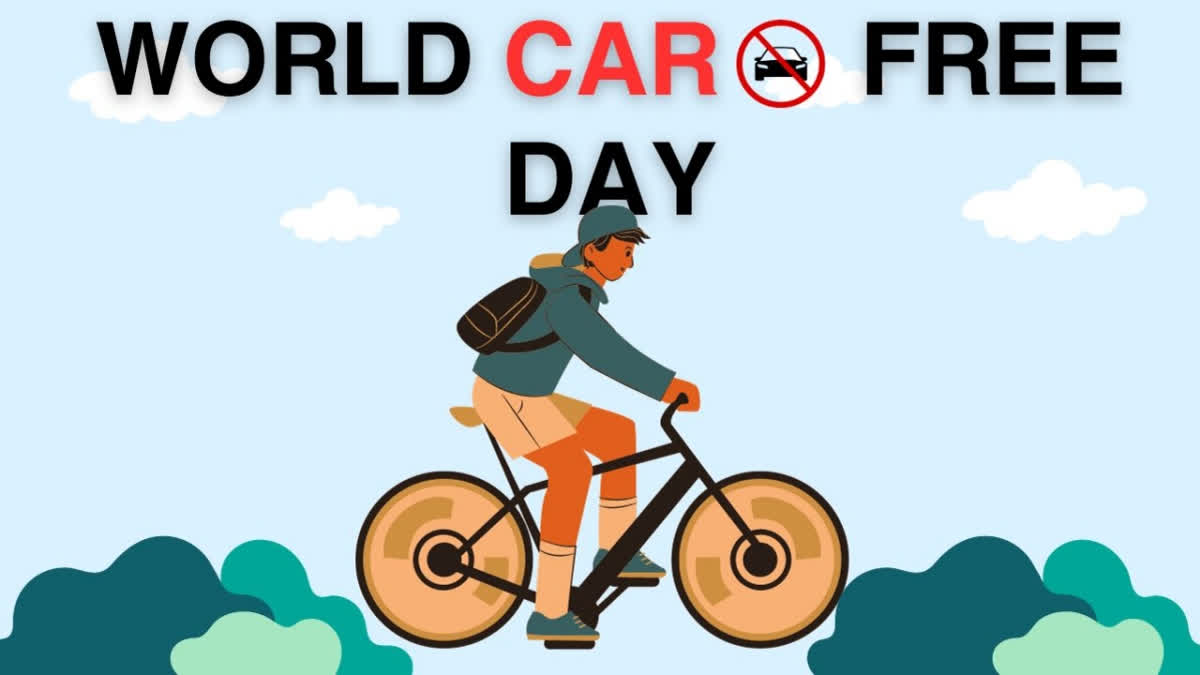Hyderabad: World Car Free Day is observed annually on 22 September, encouraging motorists to give up their cars for a day. The event highlights numerous benefits of going car-free to citizens—including reduced air pollution and the promotion of walking and cycling in a safer environment. Studies showed that for short trips in cities, one can reach more quickly using a bicycle rather than using a car.
The World Car free Network says that the World Car-Free Day can be a showcase for just how our cities might look, feel like, and sound like without a car 365 days a year. Meanwhile, every year from 16 to 22 September, European towns showcase their commitment to clean and sustainable urban transport. Car-free days are an opportunity for cities to highlight how congested roads can be used in different ways
History-The initial idea to discourage use of cars for the betterment of the environment and individuals came after the petroleum crisis of 1973. In response to the excessive increase in the number of cars, worldwide car-free day started in the 90s.
The first national campaign was inaugurated in Britain by the Environmental Transport Association in 1997. Also in 2000, car-free days went global with a World Carfree Day program launched by Carbusters, now World Carfree Network, and in the same year the Earth Car Free Day collaborative program of the Earth Day Network.
Benefits of Car Free Living
Some of the most important benefits of car-free living are reductions in pollution. Cars produce a large amount of greenhouse gases, which are responsible for climate change. In addition, cars consume a large amount of resources (e.g. oil, gas, and land) that could be used more productively elsewhere.
By living car-free, residents can promote active and healthy lifestyles. This includes reducing the amount of time spent in traffic, as well as improving public health by reducing exposure to pollutants and other dangers associated with driving.
- Reduce air pollution- Fewer cars on the road mean lower emissions of harmful pollutants. It will help to make a cleaner and healthier air quality
- Noise Pollution- Fewer cars will decrease the noise pollution. It makes for a peaceful urban environment.
- Promotion of Alternative Transportation- These events encourage people to use alternative modes of transportation like walking, cycling, or Public transport.
Interestingly, the ownership of personal cars in India remains lower than in many other countries across the globe. According to Amitabh Kant, the former senior official of Niti Aayog and India's sherpa at G20, the ratio of car owners in India is considerably lower compared to global standards. As of 2018, only 22 individuals in India own a car per thousand people, a stark contrast to figures of 980 in America and 850 in Britain. New Zealand stands at 774, Australia at 740, Canada at 662, and Japan at 591, while the average for developed countries like China is a mere 164.
According to the International Energy Agency, there will be an increase in India's car ownership by 2040, with an expected 775 per cent surge, resulting in an average of 175 cars per 1,000 people. According to the NFHS-5 report released in December 2020, 8 percent of households in India possess cars, illustrating a scenario where approximately one in twelve households own a car. In contrast, a significant 55 per cent of families have bicycles, and 54 per cent of people own a two-wheeler.
In terms of the daily commute, global statistics reveal that the average travel distance for most Indians to reach their workplace is approximately 5 km, markedly lower than the average of 26 kilometres in the United States.
